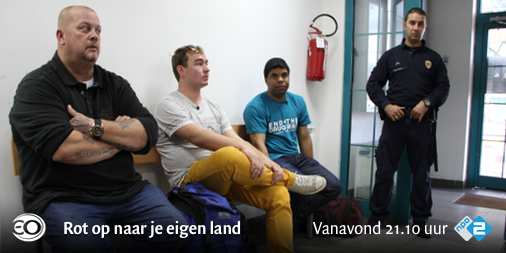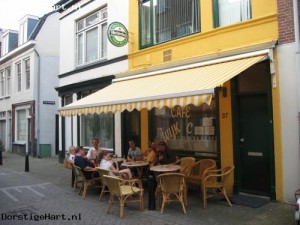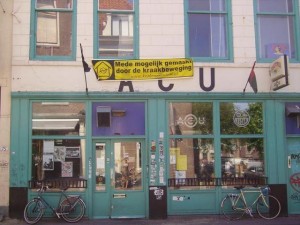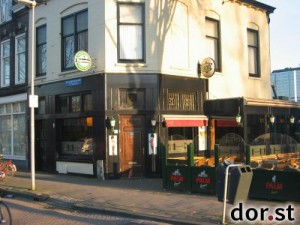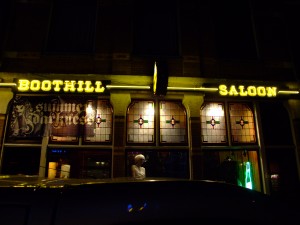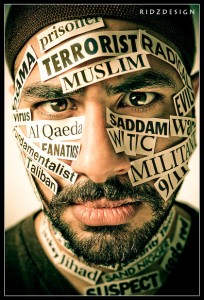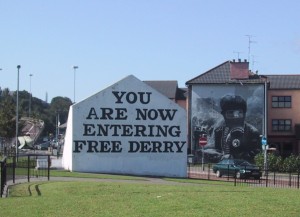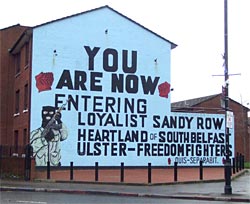So this is going to be a bit of a rambling post. It’s really just going to be about all sorts of personal opinions on the subject, my fascinations, what I actually want to convey to my audience, what I want them to experience, and most importantly, why. I spent way too much time the past week in a bit of a rut, trying to get to the bottom of the purpose of my research and product, especially the personal side of things and all that jazz.
Here’s some thoughts. First of all, the idea of social and political walls is too broad. It’s too abstract and such a large, all-encompassing idea that I might as well be talking about the meaning of life. On advice from my tutor I picked one specific example from this topic which I find the most interesting and relevant.
That example is immigration and refugees, specifically in the Netherlands. The arguably arbitrary barrier we call a national border transforms the country into an enclave of self-interest and perceived (perhaps justified) self-preservation. Especially now in an economic crisis (although the Netherlands are relatively very well off) there is an increased concern that by letting outsiders in, there won’t be enough to go around. Money, jobs, space, there’s not enough of it, and as such we should “take care of our own” first. Another facet is the irrational fear of cultural invasion, of sorts. To be more to the case, this involves the concern that by letting in more and more people of an assumed united culture, such as Islam, our own local culture is watered down, mixed, even assimilated. Though that might be true, it might not be bad. I’d like to go into further detail, and I will. I’ll base the subject matter predominantly around this one example. It’ll make it easier for me to understand it and have a focus to work on.
Secondly, I have to decide who my target audience will be, and at the same time what exactly I want to tell them. I’ve been juggling a false dichotomy on how the audience should experience the show and what they should get out of it for the past week, so let’s talk about that.
At the moment, the show is, for the purpose of keeping it clear, divided into three Acts: the creation of a wall, the perpetuation of that wall, and the removal of that wall. The creation of that wall should happen regardless. I could completely set up two groups of players myself, and in a direct manner outline the differences and power structure between them so that from the get-go, there’s already a conflict. I could also let the players do this completely from their own initiative and volition. Neither are very effective to what I’d like to reach. The first sets the scene too strictly and prefabricates a situation which may be too biased, so that the audience won’t accept it as fact within the fictional world. The last is too free and thus the audience might not even construct the social barriers by themselves. So it’s about finding a good workable balance between freedom of the audience, and direction on my part. I’d have to create a circumstance of situations through mechanics, media and dramaturgy, so that it’s in the interest of the audience (so that they can “win” the game: find the appropriate solution to a problem) to form two (or more) groups and exclude and shun the group(s) that they’re not in.
Act Two is about letting the audience continue playing as excluded groups. The audience would accept the structure of the microsociety as portrayed in the show as the norm, and as the right thing to do. We’ll look out for our own group and refuse to accept the other group, because that’s what we’ve always done and that’s what is expected of us from the interactive theatre piece. I will try to do this by interfering, and introducing new mechanics, new bits of damning information, new obstacles, to drive the audience to continue their behaviour. For example, if two groups are beginning to close in on reconciliation or compromise; “Perhaps they’re not so bad, we could work together.”
then I could bring in a radio report stating that one of the groups’ affiliations has gone and kicked a puppy, or something along those lines.
Act Three is about solving the conflict. All through the piece there should be some MacGuffin to work towards (see this blog post by my classmate Ernst-Jan), a mutual or separate goal that’s always in the distance, which is the ultimate game objective. It doesn’t even have to be relevant to the subject matter. It could just be having to cook a lovely meal before the end of the show.
So by Act Three, the audience can, but do not have to, reach this goal. If they want to reach this goal, they should realise at the start of Act Three that they will probably have to co-operate with the other group, the one they dislike so much, to be able to reach the MacGuffin quicker or more easily.
I could try to leave the audience to their own volition and interfere as minimally as possible, or actively steer the audience to a peaceful solution.
However, I’m most interested in seeing whether the two groups will come to terms at all.
And if they do, what the solutions were.
So to bring that long ramble back to where I wanted to go:
What do I want to tell my audience, and in extension, what are my further goals in this telling? What should the audience walk home with? Do I want to change their minds? Start a discussion? Make a lovely night out? Make some cash so I can feed my goldfish? Wag my finger at the audience and tut at them for being such terrible people?
I really sort of had to explain the three Acts so this would be clearer. I think I did anyway.
So here it is, badly formulated perhaps, but it’s a first draft:
I want people to experience what it’s like to be in a situation where they’re part of a group which becomes ostracised and discriminated against by a more powerful group. I want the people in that more powerful group to experience what it’s like to have to exclude a group to protect your own interests and privilege, and by doing so realise the causes associated with this behaviour.
Then, both groups should realise to some degree that this conflicting situation isn’t working, or unfair. However, I believe that this shouldn’t be fully realised, and temporarily exclusive to a few in each group. Why?
Because I’d like to see if both groups can come to a compromise, a peaceful solution to the conflict, or even perhaps a perpetuation or aggravation of the conflict. This would be an open ending of sorts, which I’d like to facilitate in a manner that any solution or lack thereof can happen.
So that’s what I’d like to have my audience experience, but that raises the next question: Why? What’s my further goal to try to achieve by giving my audience this (hopefully) interesting one-or-two-hour-long interactive theatre piece?
I don’t want to pretend that I can solve the humanitarian disasters of Dutch and European immigration and asylum policies, or the zeitgeist of xenophobia, islamophobia and racism in the Netherlands and Europe, or the perpetuation of negative stereotypes of “other” cultures in the media. It’d be lovely if I could, but that’s not my goal.
I think that many Dutch people do not experience the prejudice that comes forth from these social and political walls. People from Moroccan, Turkish, Antillean, Suriname and other backgrounds, LGBT people, people from poor backgrounds, whether they identify as Dutch or not, already know what it’s like to not belong to the “normal” part of society, to be on the shadowy side of a political or social wall. Although through being a foreigner, bisexual and (relatively) poor, I got a tiny taste of this situation, I can’t and shouldn’t pretend that I’m not in a very priviliged position. Dammit, I’ve got a piece of paper saying I’m Dutch and I’m as white as it gets!
So it’s about trying to grab that white, middle-class Dutch section of society by the collar and giving them a small taste of what it’s like to sit at the other side of the wall, or casting a blinding light on the behaviour that facilitates that wall.
So there’s already a set of criteria for my target audience: white, middle-class and Dutch.
While many countries have had their (un)fair share of oppression through the difference in power between two or more communities, I’m not sure the Netherlands has had this. At least, not in recent history, certainly not today, if we’re speaking in terms of this sort of oppression being present in the national psyche and culture.
For example, while Ireland is just as predominantly white and middle-class as the Netherlands, the centuries of subjugation under British rule still echoes in every facet of Irish culture, from the originally Irish tradition of boycotting to the power of the Catholic Church, to an often ready acceptance of unjust circumstances.
The Netherlands has lost its period of a society divided by creed and religion, ending roughly in the sixties before which everyone identified as socialist or capitalist, liberal or conservative, Protestant, Jewish or Catholic, and had their own set of newspapers, radio and TV stations, political parties, social clubs, unions, schools and neighbourhoods. This is known as verzuiling or pillarisation. However, these different pillars, though forming enclaves and erecting metaphorical walls, didn’t have much of a conflict or contrast in de facto power over one another. In comparison to Northern Ireland, which still has this pillarisation in a much more extreme form, where there really are only two pillars: Unionist and Nationalist, and the conflict and contrast in power is very real.
Though verzuiling does still echo on today, and many people remember its effects, it’s becoming less and less relevant today, as the schisms are shifting to what is perceived as “allochtoon” and “autochtoon”, or non-native and native.
For those belonging to the native category, there’s not much knowledge of what it’s like to belong to the non-native category. Again, a veil of privilege obscures that realisation.
How do you remove that veil? Well, Rot Op Naar Je Eigen Land threw people into the deep end and let them experience first-hand what it’s like to be an asylum seeker en route to the Netherlands.
I don’t have the knowledge, money, time or cojones to do something like that, to be frank, so that’s why I’d like to try the next-best-thing:
Simulating that experience in a playful environment.
So why do I feel like I want to let my audience experience that?
Well, reasons:
To shed a bit of light on how I see the ways in which social and political walls are built and maintained.
To let the audience realise the political and social factors, behaviours, influences and institutions at play to cause them.
To let the audience play with possible solutions to these social and political walls, and if no solution is found by the end of the show, have them discuss how they could have solved it.
All of the above in order to let the audience think about and discuss these topics further, perhaps becoming a little bit more aware as to what they could do to make things better, and becoming that smidgeon bit more aware of their own privilege in Dutch society, and quite a bit more aware about how people on the receiving end of the barbed wire feel, on top of that tall wall between allochtoon and autochtoon.
Did I just use the word “aware” that much? Did I really write 2,000 words?
I just read through this entire post. I did warn you I have a taste for tangents, contradictions and rambling nonsense, but it’s nice to put it all to paper.
I need a cigarette.


